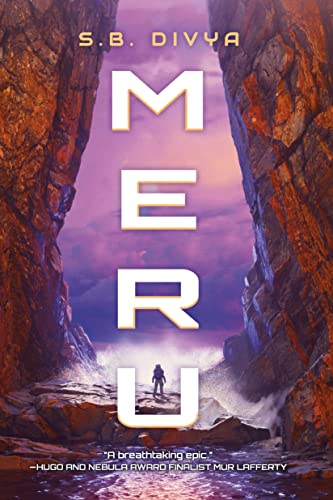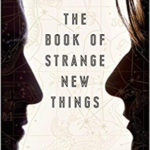Meru by S.B. Divya is an intriguing space opera that presents a future Earth, ruined by humans, and now dominated by evolved sentient beings, known as alloys. A distant planet, named Meru, is evolving primitive life forms and has oxygen in its atmosphere, but humans, in their baseline form, are forbidden to settle there or anywhere else other than Earth. Yet there is a twenty-two year old human, named Jayanthi, who is determined to prove that people like her can and should live there.
She lives in a universe where humans, having laid waste the Earth out of driving ambition and greed, have become subservient to their more advanced genetic offsping. The alloys have created a set of laws that limit humans to life on Earth but under alloy guidance. Alloys and sentient constructs freely roam other star systems but abide by strict laws to respect all life forms and avoid contamination of new worlds.
Alloys can be any size or shape, as they can combine genes from all life forms. While most live in space on stations that can accommodate their vastly varying sizes and environmental needs, a few, like Jayanthi’s parents, choose to live on Earth in near-human form, though that preference earns them some scorn as human-lovers. Others, known as pilots, are huge creatures capable of flying in space and carrying cargo, including humans in specially prepared rooms within their bodies.
In Meru, Jayanthi, who lives with a sickle cell condition that makes life hard on Earth, wants to see if her genes can be an asset on a planet with a higher concentration of oxygen. She persuades a mentor alloy, Hamsa, to argue on her behalf before the alloy convocation that decides these things to permit a limited experiment on Meru to test her ideas. Hamsa has a larger agenda to change the law to allow humans to travel anywhere in the galaxy under alloy guidance, but he has been opposed for a long time by more conservative alloys who are still embittered about the reckless destruction caused by humans in earlier centuries.
Hamsa wins permission for Jayanthi to travel to Meru but under strict conditions. She must always be accompanied by an alloy and cannot mix her genes with other life forms or permit any type of contamination of the planet. Jayanthi travels to Meru aboard the pilot, Vaha, who feels zie has never been able to live up to the expectations of zir creator and is trying to prove zir capabilities. Thus begins the improbable relationship between human and pilot that blossoms into a deeply loving attachment. Their intimacy becomes more possible when Vaha, like other alloys, creates a human-like being, known as an incarn within zir artificial womb. Vaha can transfer zir consciousness into the incarn while zir pilot body remains in orbit around Meru.
Although alloys, always on the lookout for indications of AAD (Aspiration and Avarice Disorder) keep a tight lid on humans, Jayanthi is all about ambition and wants to make discoveries that will be immortalized in the grand library of knowledge, known as the Nivid. Yet humans are forbidden access to this spectacular library of knowledge in space as well. So when Jayanthi proceeds with forbidden experiments, she is headed for a direct clash with the laws imposed by the ruling alloys and the powerful political factions that have contempt for humans.
The story has a unique combination of adventure, romance and revolution, but it becomes entangled in the legalistic reasoning and institutions that Jayanthi has to deal with. It has some adventure, some romance and a kind of courtroom drama in space, but, even though the novel kept my interest throughout, these elements didn’t quite blend together in a dramatically effective way.
I found myself wanting some crucial background that never comes clear. We are simply told that humans ceded control over Earth and themselves to the alloys under a compact some centuries earlier, but nothing else about how or why that happened. We see a little bit of the ruined Earth and its revival, as a combination of constructs, alloys (usually being punished by serving time on Earth) and humans working hard to take down the remains of ruined cities and bringing back species of all types that had gone extinct. But there’s only a glimpse, and no larger view of what happened in earlier centuries. Similarly, on Meru we only see a small area of the pristine planet where life is just taking hold in the form of cyanobacteria.
I was a bit puzzled by the indirect way Jaya went about proving that humans could live in the atmosphere of Meru, relying on a strange blending of genes. The climax to the story turns on a series of legal arguments in an alloy virtual court in not one but a series of trials. Another element of the ending depends on a vote among alloys on what will happen to humans. Everything is worked out to tie up loose ends in accordance with the legal system the novel presents, but it’s not the most suspenseful or exciting way to close out the story.
There are many elements of Meru to admire, especially the little we see of a regenerating Earth and the “new” Meru, the relationship between Jayanthi and Vaha and the laws governing this universe. It just didn’t come together smoothly enough for me to stop asking questions and simply enjoy the ride.
My thanks to 47North and Net Galley for an advance review copy of Meru as the basis for this review, which reflects solely my own opinions.





I’m going to be reading this soon. I’m curious to see if I have some of the same issues. Thanks for sharing your review😁